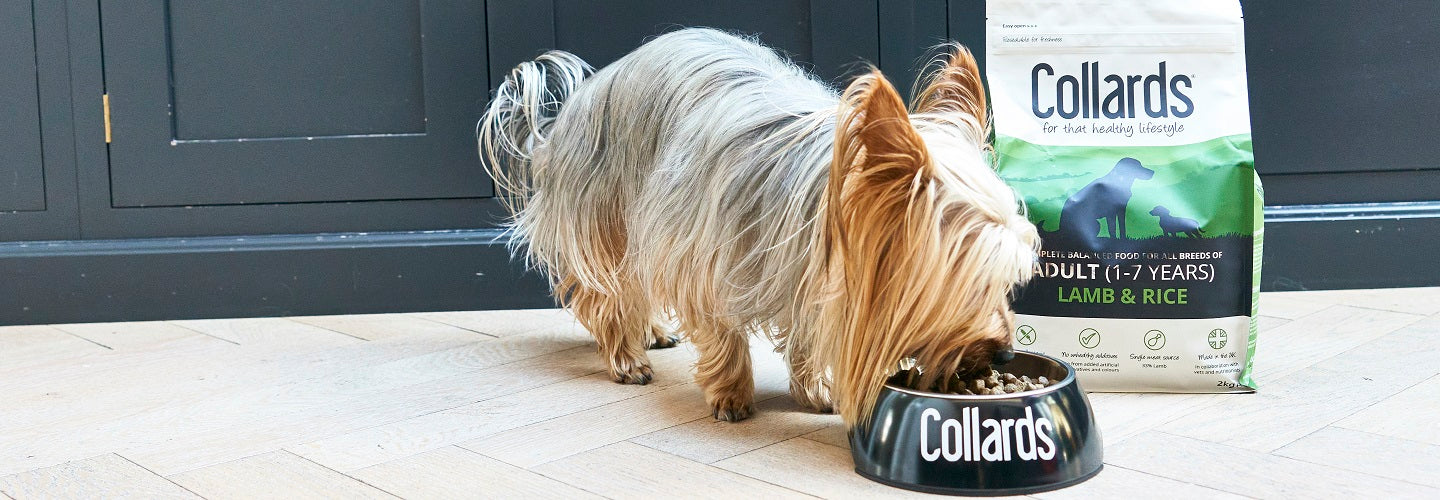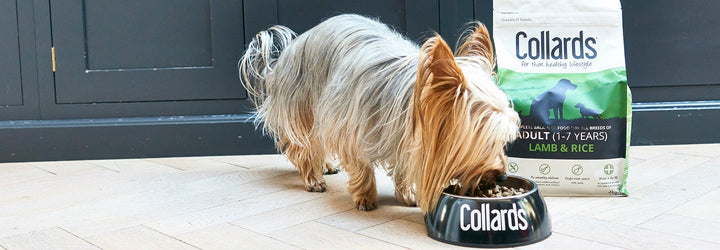

Posted by Emma Oldroyd, on
Dog Nutrition: The Pets & Friends Guide to Size-specific Nutrition
When it comes to your dog, their diet can be as unique as they are. Ensuring they get the right nutrition is crucial to their health and development as a puppy growing into adulthood.
There are many different diets available on the market, so whether you’re feeding dry dog food, wet dog food, raw dog food or a mixed diet- their daily feeding regime will depend on their size.
Our dog food experts have put together a guide on the differences between size specific recipes to help you make the right choice for your dog or puppy.

The basics of size specific dog nutrition
The most important thing to remember is to always follow manufacturers feeding guidelines when feeding your dog. Make sure you weigh your dog regularly, especially if they are still a growing pup- so you can adapt their diet to keep them healthy and happy.
Your dog’s calorie intake should also allow for treats, especially if they eat daily dental chews or you used reward-based training methods.
Food differences for different dog sizes
When it comes to the differences in food, for small and large breed puppies and dogs- the most obvious difference is the size of the kibble in dry dog food.
Small breed specific recipes will have much smaller kibble than medium or large breed recipes. This is to ensure your small breed dog can eat their dry food safely. The same goes for treats- good quality treats and natural treats will be available in a range of sizes to suit the size of your dog’s mouth.
The nutritional makeup of size specific recipes will also differ. This applies to both puppy and adult recipes, as well as the recommended nutritional split for prepared raw meals.
Good quality large breed puppy and dog food will be less energy dense and contain more calcium to help with bone development (especially for puppies as their bones grow!). Whilst small breed puppy and dog food will be more calorie dense due to their faster metabolisms.
Small breed dogs can be more susceptible to gastrointestinal problems, so recipes usually contain more easily digestible proteins such as chicken or lamb to help prevent these issues and discomfort.
Large breed dogs can also suffer from joint issues as they grow, so good quality large breed food will contain a balance of Glucosamine, Chondroitin and MSM to support their joint health at every life stage.
Should I use a slow feeder for my dog?
Sometimes how your dog eats can help make a difference depending on their size. Large breed dogs would benefit from raised feeders to help prevent neck/back problems and help them digest their food easier.
Larger mouths tend to ‘scoff’ food faster and in larger quantities too- so using slow feeding bowls, puzzles and Lickimats can help calm your dog as they eat and help avoid stomach upsets and wind.
Puzzles and Lickimats are also ideal for treat time for all breeds and sizes of dogs! They can help your dog savour their treat for longer whilst helping to control their calorie intake. These are also great for enrichment to keep your dog both mentally and physically stimulated.
Looking for the perfect recipe? We would always recommend feeding size-specific recipes to your dog for the best possible nutritional value, but if you’re not sure where you start, our personalised pet nutritional plan can help.
Simply answer a few questions about your dog and we can suggest a range of food and treats to suit their size, age and preferences!
